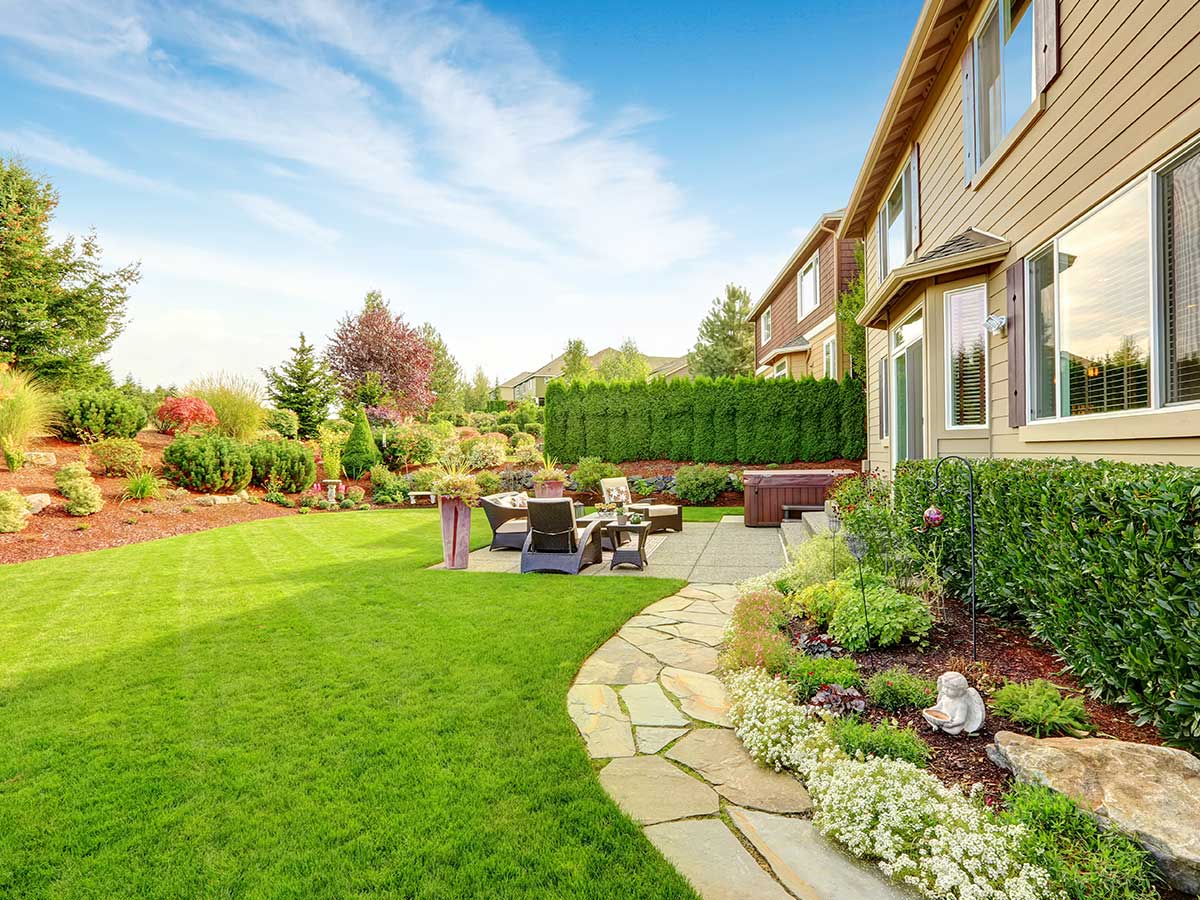
Whether you have a large garden or a small yard, residential landscaping can add beauty and functionality to your home. However, there are many things to remember when designing your landscaping, such as asymmetrical and asymmetrical balance, soil pH, pest and disease issues, and more.
Landscape plants should fit with your home
If you consider redesigning or renovating your property, you should choose the right plants. Not only will the right choices enhance the beauty and functionality of your home, but they can also help deter crime, provide protection from the elements, and improve the air quality. Besides, your landscape is a great place to entertain and play.
To determine which plants will do the trick, you must first decide what you want to accomplish with your new landscape. Whether you are planning to build a brand new yard, remodel an existing one, or give your current one a facelift, you will want to choose a mix of flowering plants, trees, shrubs, and other garden goodies that will not only look good but will be able to flourish for years to come.
Asymmetrical and asymmetrical balance
Asymmetrical and asymmetrical balance in residential landscaping can be achieved through several different techniques. They are typically less noticeable to observers and can often be created with natural-looking materials. The key is to develop a sense of unity. Therefore, it is essential to have a professional landscape designer work with you to help you maintain a balance throughout the whole design.
When using the asymmetrical and asymmetrical balance in your landscape, it is essential to consider both the mass and the form of the plants. For example, if you are designing a circular garden, you need to balance the height and weight of the plants to create a pleasing effect.
Another way to achieve asymmetrical and asymmetrical landscapes is to use varying path shapes. These are especially helpful for creating visual interest in your backyard or patio.
Repetition creates rhythm
The idea of repetition is a powerful one in landscape design. Creating a sense of unity and symmetry in a landscape is easy.
Repetition can be achieved by following a simple pattern or using elements repeated in various ways. These include the use of color, shape, and texture.
When appropriately used, repetition can bring a meditative, calming effect to a landscape. Repetition can also help create an appealing contrast. For example, different sizes and shapes of plants can be used to achieve dramatic dominance.
Another technique for creating rhythm is through alternating patterns. Alternating patterns can be light and dark, opposites of size, or a mixture of the two. In landscapes, alternating patterns can be created using stones, trees, and other hardscapes.
Soil pH is not in an acceptable range
If you’re planning to install a new garden or redesign an old one, you need to determine the pH of the soil before you start. This will help ensure your plants’ health.
The best way to find out what the pH of your soil is is to do a soil test. You can do this by taking a soil sample or using a soil pH meter.
Many factors can affect the soil’s pH. Some of these include the weather, rainfall, and geography. Aside from affecting the soil’s ability to hold nutrients, soil pH can also influence beneficial microorganisms.
Soil pH can vary considerably from location to location. In some areas, the pH is as low as 4.2. When this happens, you need to add acidifying agents to increase the soil’s acidity. Another option is to add organic compost.
Pest and disease problems
Every gardener will come across pests and diseases. These can ruin the appearance of your landscape. However, there are ways to keep your plants healthy and free of these issues. The key is to identify them and take measures to eliminate them.
Most insects and diseases can be prevented if your plants are adequately maintained. Make sure you check your plants regularly for signs of pest damage. This includes checking for noticeable bite marks. Also, make sure you inspect the underside of the leaves.
Treating the problem as soon as possible is vital if you notice signs of infestation. This will prevent further damage. For example, aphids can be controlled by using insecticidal soap.
Alternatively, you can use a fungicide. If you are still determining which treatment will work best, you can contact an agricultural expert.